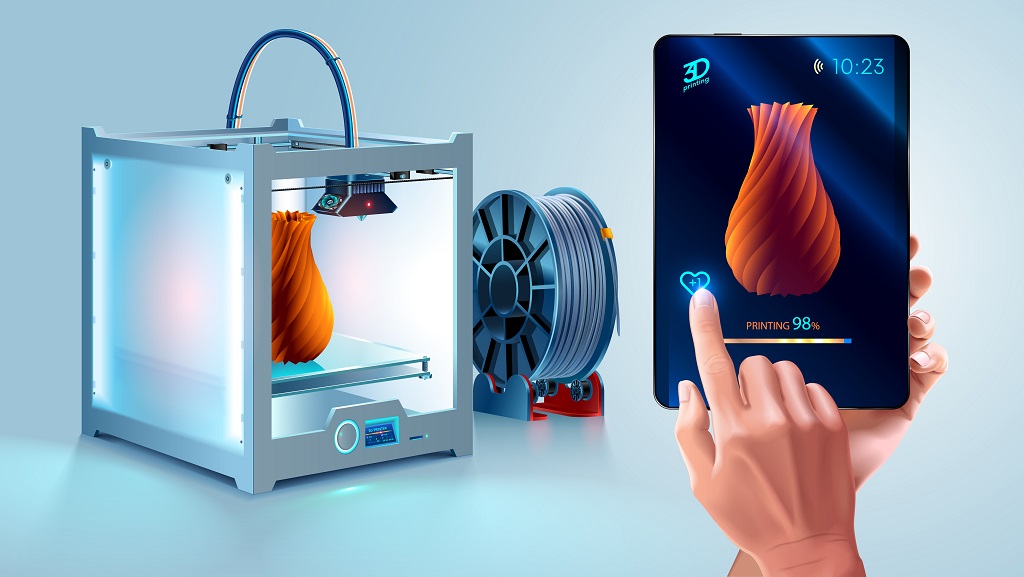![[Image: Shutterstock]](https://fabbaloo.com/wp-content/uploads/2020/05/image-asset_img_5eb0a81e5a516.jpg)
As 3D printing continues to see adoption in industry, legal implications must be kept in mind: we speak to Elizabeth (Beth) D. Ferrill of IP law firm Finnegan.
Ferrill, a partner in the Washington, D.C. office of global firm Finnegan, Henderson, Farabow, Garrett & Dunner, LLP, is leading the company’s 3D printing working group. Taking the reins from well-known lawyer and author John Hornick upon his retirement from the practice of law, Ferrill is well versed in the unique implications of a digitizing business world.
I caught up with her to discuss her background, new role, and insights into IP for 3D printing.
![Beth Ferrill, Attorney at Law [Image: Finnegan]](https://fabbaloo.com/wp-content/uploads/2020/05/Ferrill-Elizabeth-1558-020-Large_img_5eb0a81ed48b2.png)
How did you first become involved in the legalities of 3D printing?
“In 2013, I started considering the ramifications of 3D printing as it relates to design rights. Later my interests expanded to consider issues related to other types of IP rights and the repair/ reconstruction doctrine.”
What will be your new role at Finnegan, and how do you intend to approach it?
“I’ve had the pleasure of working with John Hornick on 3D printing-related legal issues for a number of years. Now, I’m excited for the opportunity to lead Finnegan’s 3D printing working group. One of my top priorities will be to continue educating our clients about the legal issues presented by 3D printing. Luckily John is still with the firm, so it will be great to have access to his knowledge and guidance.”
What new implications in terms of intellectual property arise as business becomes increasingly digitized?
“Digitization offers the opportunity to save a company’s product designs as computer files, which can save valuable space over keeping a warehouse of finished replacement parts. But with digitization comes the need to safeguard those files. Most companies will choose to keep those files as confidential business materials. It is incredibly important for companies to manage and track access to these files and ensure secure transmission to only authorized users for printing.”
How will regulatory bodies influence the future of the 3D printing industry?
“From an IP perspective, I don’t think that government regulation will change how applicants choose to protect their innovations and designs. Rights owners will still seek IP protection for their innovative 3D printing techniques and materials generally, even if certain applications of that technology are not permitted by the government. There may be some designs that are not economically viable to seek protection due to regulation and perhaps applicants will choose not to protect those designs.”
What are some of the major concerns existing companies have with bringing 3D printing into existing operations?
“Many companies have proven manufacturing techniques and may be reluctant to take a chance on a completely new form of manufacturing. Once companies adopt 3D printing, they will likely find that they can increase their redesign cycle, because no new tooling is required. In some cases, companies may need to redo their safety testing or reconsider their warranty structures. On a higher level, 3D printing may allow certain parts to be made on demand rather than made in some minimum quantity and stored.”
What should young companies keep in mind when building businesses incorporating 3D technologies?
“Just because the engineering and manufacturing techniques may be different, companies still need to strategically plan how to spend their IP budgets. Some smaller companies may choose to invest in protecting some innovations as trade secrets, reserving their patent budget for key product lines. When filing patent applications, some smaller companies prefer to file a larger application with many details that can be used in the future as the basis for related patent applications. Finally, young companies should carefully consider their foreign filing strategies. Foreign filing cost can balloon quickly so it is important to select your jurisdictions thoughtfully with an eye towards your business objectives.”
How do you see the shape of the overall 3D printing industry changing as it matures? Over the next year? Five years? Ten?
“In the near term, we see opportunities in industrial areas, in particular, those areas that are driven by customization (like medical devices and eventually pharmaceuticals) or driven by special requirements that can benefit greatly from the new 3D printing engineering techniques (such as reducing weight for the aviation industry). In the longer term, 3D printing will likely pervade at least elements of most industries, as companies learn that 3D printing can offer cheaper and faster solutions over traditional manufacturing methods. There may also be moderate growth in local on demand printing services. I think we are somewhat far out from the standard consumer being interested in maintaining and operating a 3D printer at home. Rather, I think that consumers will continue to buy things online and have them delivered; but those items may increasingly be made with some element of 3D printing.”
What else do you think we should know about the business of 3D printing?
“3D printing offers a great opportunity to reconsider a company’s design process. I think that we may not even be able to imagine how product design will change when the engineering is not constrained by traditional manufacturing techniques. The Grid faucet by Kohler KALLISTA is an excellent example of high style and innovative design that was not possible before 3D printing. In the future, we may look back on this time as being as important to design as the development of plastic.”
Via Finnegan











